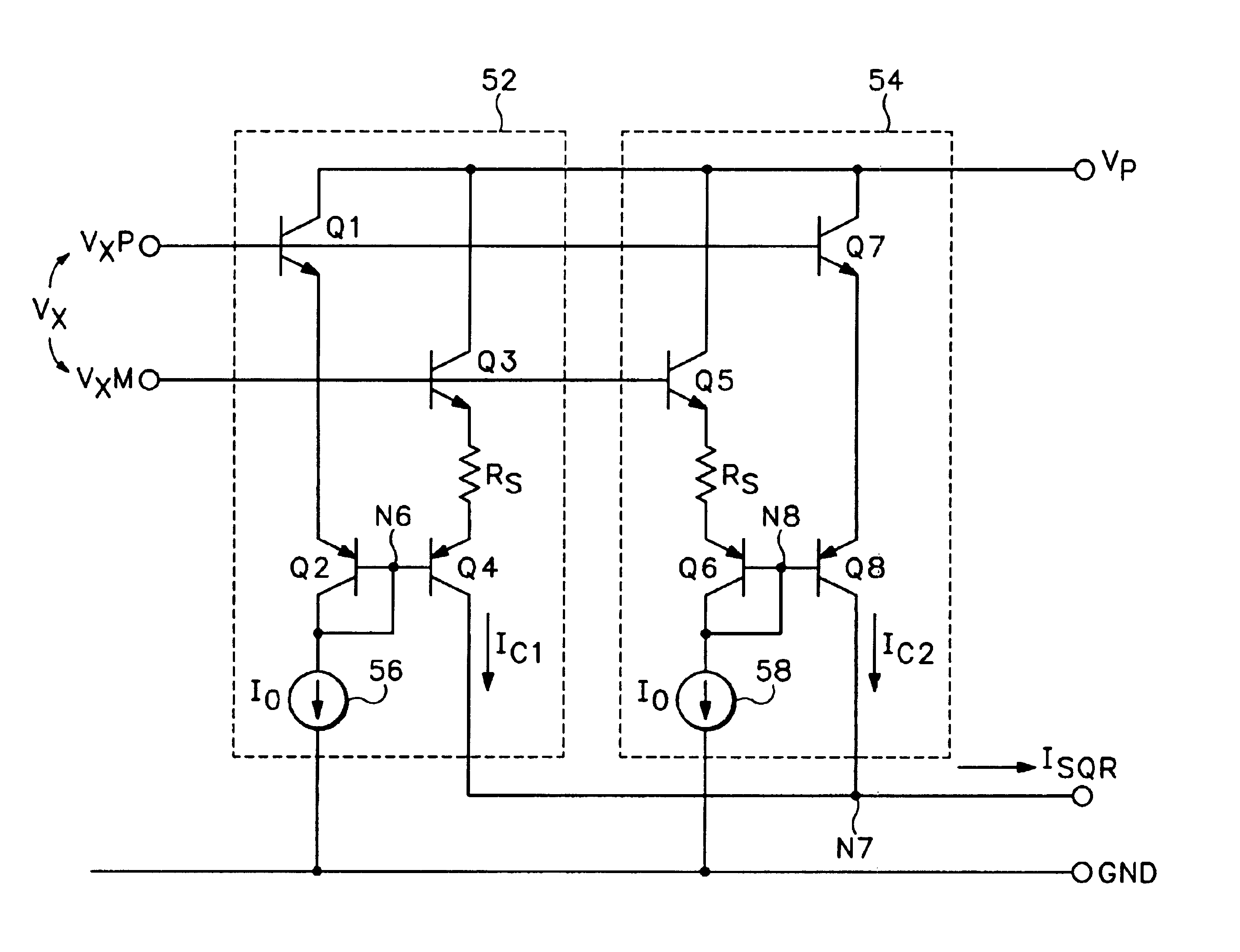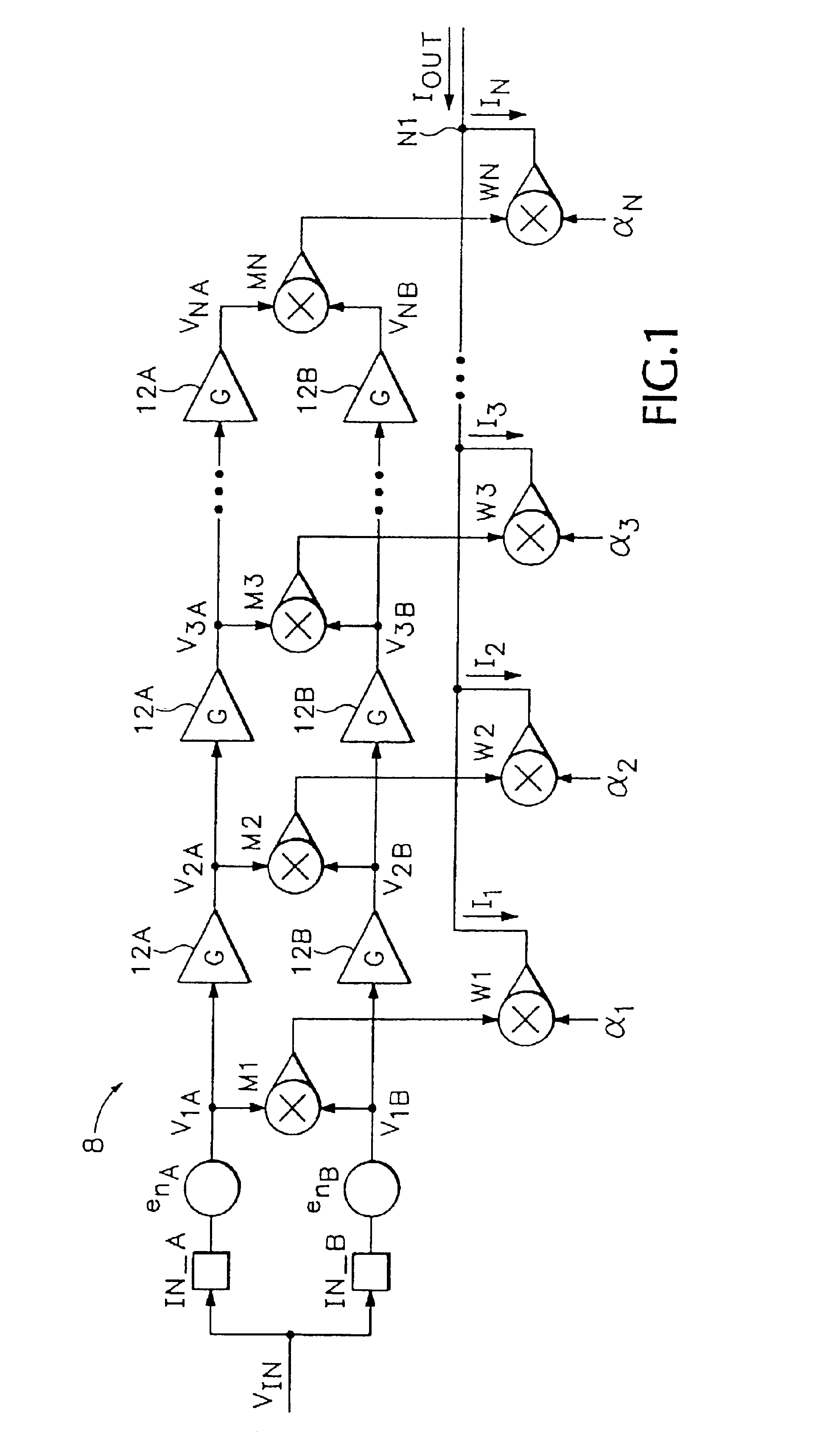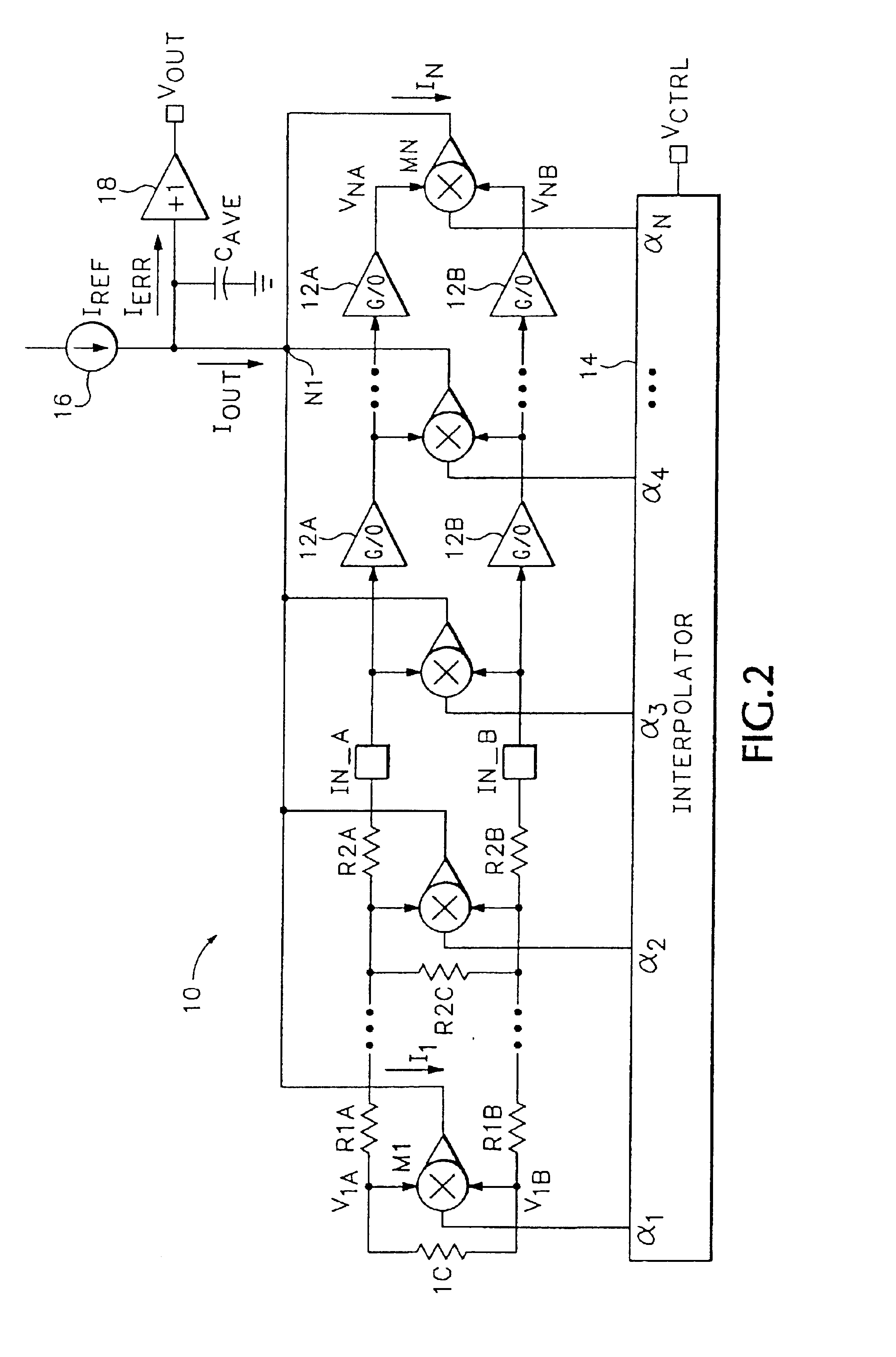Squaring cells and multipliers using summed exponentials
a technology of exponentials and multipliers, applied in the field of rms-dc converters, can solve the problems of inability to provide an rms response in logarithmic amplifiers, and difficulty in performing accurate rms-dc conversions over a wide dynamic rang
- Summary
- Abstract
- Description
- Claims
- Application Information
AI Technical Summary
Benefits of technology
Problems solved by technology
Method used
Image
Examples
Embodiment Construction
FIG. 1 is a simplified schematic of an embodiment of a backbone of an RMS-DC converter 8 in accordance with the present invention. The system of FIG. 1 includes a first chain or series of gain stages 12A, a second series of gain stages 12B, a first series of four quadrant multipliers M1, M2, . . . MN, and a second series of weighting multipliers W1, W2, . . . WN which only need to operate in two quadrants.
The first series of gain stages are connected in a cascade arrangement and generate a first series of progressively amplified signals VkA (k=1 . . . N) in response to the input voltage VIN. Likewise, the second series of gain stages generate a second series of progressively amplified signals VkB (k=1 . . . N) in response to VIN. The signals V1A and V1B are simply the input voltage VIN (plus the noise from sources enA and enB as described below). The first series of multipliers are coupled to the first and second series of gain stages so that each multiplier Mk generates an output s...
PUM
 Login to View More
Login to View More Abstract
Description
Claims
Application Information
 Login to View More
Login to View More - R&D
- Intellectual Property
- Life Sciences
- Materials
- Tech Scout
- Unparalleled Data Quality
- Higher Quality Content
- 60% Fewer Hallucinations
Browse by: Latest US Patents, China's latest patents, Technical Efficacy Thesaurus, Application Domain, Technology Topic, Popular Technical Reports.
© 2025 PatSnap. All rights reserved.Legal|Privacy policy|Modern Slavery Act Transparency Statement|Sitemap|About US| Contact US: help@patsnap.com



